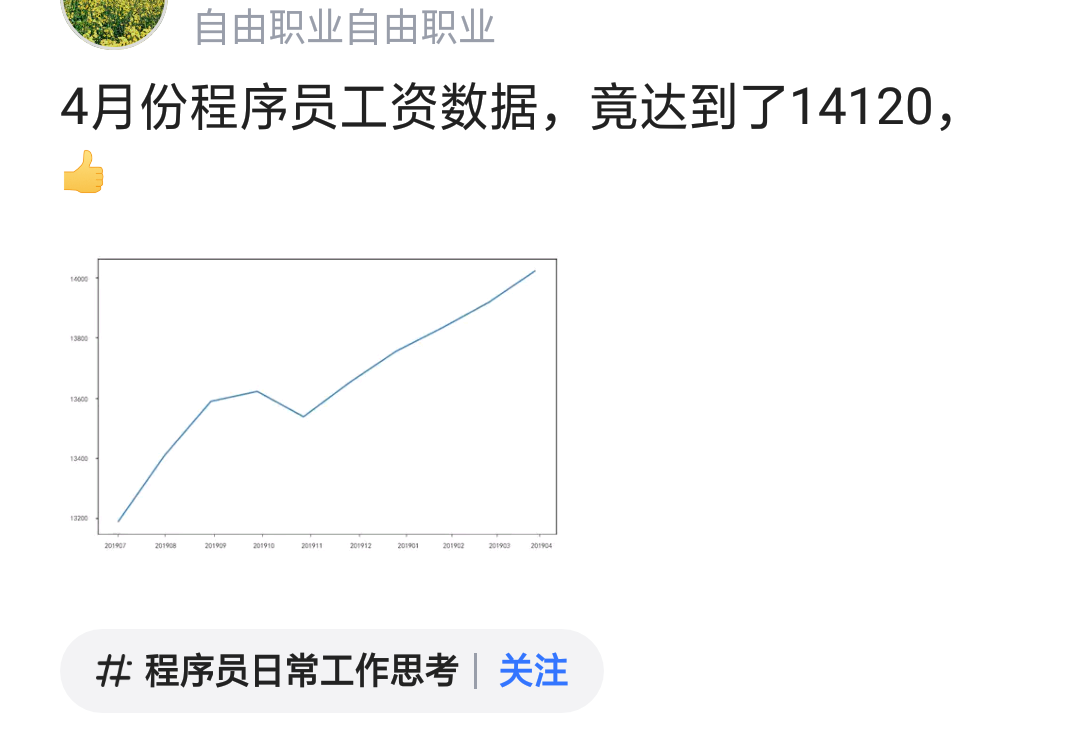I have this working query, but I need to add all months to my result, no matter if the items sold during that month:
select * from (
select
to_char(max(change_date), 'YYYY-MON')::varchar(8) as yyyymmm,
max(change_date) as yearmonth,
sum(vic.sold_qty / item_size.qty)::numeric(18,2) as sold_qty, -- sold monthly
sum(sum(on_hand)) OVER (PARTITION BY vic.item_id order by year,month) as on_hand --running balance
from (((view_item_change vic
left join item on vic.item_id = item.item_id)
left join item_size on item_size.item_id = vic.item_id and item_size.name = item.sell_size)
left join item_plu on vic.item_id = item_plu.item_id and item_plu.seq_num = 0)
where 1 = 1 -- cannot limit date here as its used to show running balance.
and vic.change_date < current_date - date_part('day',current_date)::integer --show only till end of last month
and item.item_id = (select item_id from item_plu where number = '51515')
group by vic.item_id, year, month
) as t
where yearmonth > current_date - date_part('day',current_date)::integer - 540 -- 18 months
which gives me something like this:
"2013-JUN";"2013-06-29";0.00;7.0000
"2013-JUL";"2013-07-22";0.00;6.0000
"2013-AUG";"2013-08-28";2.00;4.0000
"2013-SEP";"2013-09-02";0.00;4.0000
"2013-OCT";"2013-10-28";0.00;4.0000
"2013-NOV";"2013-11-15";0.00;4.0000
"2013-DEC";"2013-12-16";0.00;6.0000
"2014-FEB";"2014-02-10";1.00;5.0000
"2014-APR";"2014-04-09";0.00;5.0000
But I also want to show the months 2014-JAN and 2014-MAR so that my chart will be better time scaled.
I know how to do the generate_series(start_date, end_date, '1 month') intervals, but I can't quite see how I can join this series to the result set above.
I accepted first answer, but after 2 weeks of testing, found a problem. The left join to the series and then adding a coalesce to show 0's and not nulls for the empty months causes a problem wit the running balance.
Resulting query:
SELECT yyyymmm, yyyymmm,
coalesce(sold_qty,0) sold_qty, coalesce(on_hand,0) on_hand
FROM (
SELECT date_trunc('month', month_series)::date as yyyymmm
FROM generate_series(current_date - date_part('day',current_date)::integer - 540
,current_date- date_part('day',current_date)::integer
, interval '1 month') month_series
) month_series
LEFT JOIN (
select * from (
select
date_trunc('month', max(change_date))::date as yyyymmm,
max(change_date) as yearmonth,
sum(vic.sold_qty / item_size.qty)::numeric(18,2) as sold_qty,
sum(sum(on_hand)) OVER (PARTITION BY vic.item_id order by year,month) as on_hand
from (((view_item_change vic
left join item on vic.item_id = item.item_id)
left join item_size on item_size.item_id = vic.item_id and item_size.name = item.sell_size)
left join item_plu on vic.item_id = item_plu.item_id and item_plu.seq_num = 0)
where 1 = 1 -- cannot limit date here as its used to show running balance.
--vic.change_date >= current_date - date_part('day',current_date)::integer - 730 -- only get results for last
--show only till end of last month
and vic.change_date <= current_date - date_part('day',current_date)::integer
and item.item_id = (select item_id from item_plu where number = '19M7077')
group by vic.item_id, year, month
) as a
where yyyymmm > current_date - date_part('day',current_date)::integer - 540 -- 18 months
) q USING (yyyymmm)
order by 1
Results I get:
"2013-07-01";"2013-07-01";0;0
"2013-08-01";"2013-08-01";0;0
"2013-09-01";"2013-09-01";1.00;53.0000
"2013-10-01";"2013-10-01";0;0
"2013-11-01";"2013-11-01";0;0
"2013-12-01";"2013-12-01";0.00;53.0000
"2014-01-01";"2014-01-01";0.00;52.0000
"2014-02-01";"2014-02-01";0;0
"2014-03-01";"2014-03-01";0;0
"2014-04-01";"2014-04-01";0;0
But I want:
"2013-07-01";"2013-07-01";0;53.0000
"2013-08-01";"2013-08-01";0;53.0000
"2013-09-01";"2013-09-01";1.00;53.0000
"2013-10-01";"2013-10-01";0;53.0000
"2013-11-01";"2013-11-01";0;0;53.0000
"2013-12-01";"2013-12-01";0.00;53.0000
"2014-01-01";"2014-01-01";0.00;52.0000
"2014-02-01";"2014-02-01";0;0;52.0000
"2014-03-01";"2014-03-01";0;0;52.0000
"2014-04-01";"2014-04-01";0;0;52.0000
Table definitions
CREATE TABLE item
(
item_id character(22) NOT NULL,
version integer NOT NULL,
created_by character varying(16) NOT NULL,
updated_by character varying(16),
inactive_by character varying(16),
created_on date NOT NULL,
updated_on date,
inactive_on date,
external_id numeric(14,0),
description character varying(40) NOT NULL,
dept_id character(22),
subdept_id character(22),
sell_size character varying(8) NOT NULL,
purch_size character varying(8) NOT NULL
);
CREATE TABLE item_change
(
item_id character(22) NOT NULL,
size_name character varying(8) NOT NULL,
store_id character(22) NOT NULL,
change_date date NOT NULL,
on_hand numeric(18,4) NOT NULL, -- sum column / item_id = total on_hand
total_cost numeric(18,4) NOT NULL,
on_order numeric(18,4) NOT NULL,
sold_qty numeric(18,4) NOT NULL,
sold_cost numeric(18,4) NOT NULL,
sold_price numeric(18,4) NOT NULL,
recv_qty numeric(18,4) NOT NULL,
recv_cost numeric(18,4) NOT NULL,
adj_qty numeric(18,4) NOT NULL,
adj_cost numeric(18,4) NOT NULL
);
CREATE TABLE item_size
(
item_id character(22) NOT NULL,
seq_num integer NOT NULL,
name character varying(8) NOT NULL,
qty numeric(18,4) NOT NULL,
weight numeric(18,4) NOT NULL,
CONSTRAINT item_size_pkey PRIMARY KEY (item_id, seq_num),
CONSTRAINT item_size_c0 FOREIGN KEY (item_id)
REFERENCES item (item_id) MATCH SIMPLE
ON UPDATE NO ACTION ON DELETE CASCADE,
CONSTRAINT item_size_c1 UNIQUE (item_id, name)
);
CREATE TABLE item_plu
(
item_id character(22) NOT NULL,
seq_num integer NOT NULL,
"number" character varying(18) NOT NULL,
size_name character varying(8)
);
CREATE OR REPLACE VIEW view_item_change AS
SELECT date_part('year'::text, item_change.change_date) AS year,
date_part('month'::text, item_change.change_date) AS month,
date_part('week'::text, item_change.change_date) AS week,
date_part('quarter'::text, item_change.change_date) AS quarter,
date_part('dow'::text, item_change.change_date) AS dow,
item_change.item_id,
item_change.size_name,
item_change.store_id,
item_change.change_date,
item_change.on_hand,
item_change.total_cost,
item_change.on_order,
item_change.sold_qty,
item_change.sold_cost,
item_change.sold_price,
item_change.recv_qty,
item_change.recv_cost,
item_change.adj_qty,
item_change.adj_cost
FROM item_change;
There is only a single row per month because I also do a group by year, month. As you see, the view has the year, quarter, month, week, dow columns for easier reporting.
To get working data for this, if required, I can do it, but it would require manually creating it. I have simplified the tables and left out all constraints and some columns.




